Making Silver Texture Rings (lost wax).
Making a simple texture ring has many steps and is more difficult than it might seem at first. Here is the system I am currently using.

You will need 'wax wires' or 'sprue wax' (available ar Rio and others) I keep a number of sizes in stock a 5 oz box will make a lot of rings.

You need warm water. I have found that 122 f. is optimal for working with this type of wax. I purchased a small crockpot at a thrift store that I use for this purpose. I regulate the temperature by unplugging and plugging it in, not an ideal method. If you know of a better solution please let me know. An accurate thermometer is essential.

Probably the most important part of making awesome cast texture jewelry is having awesome textures to work with. I try to keep my 'texture radar' on at all times and have collected textures from all over the country in my travels. If you cannot bring a textured object back to the studio, the next best thing is to make a 2-part impression mold. Check out my blog post here for more info on collecting textures with this process. Good texture is essential, a great cast of a so-so texture makes a so-so ring.

Before beginning, I pre-sort the textures I want to work with so that once I get going, I can focus on making quality impressions.

The wax wires are 6" long, so cutting them in half will still allow you to make a fairly large ring. However.... when making impressions, the ends are often not usable. They often get flattened out or have inconsistent texture. So if you want to make a size 13+ ring, I use a 4" wire.

I drop a dozen or so wires into the warm water at a time. As long as the water is close to 122 f. the wax will soften but not melt. This is very convenient but requires that you closely monitor your water temp, I check it every 10 minutes or so.

Setup your texture source on a flat waterproof surface (countertop) as this process is a wet one. Working quickly, remove your warm wax from the water place it on the textured surface and apply pressure. You only have about 5 seconds to work the wax before it cools too much. If you stumble with the placement of the wax and it takes longer than a few seconds, just toss it back in the water and grab another wire.

Applying pressure to push the warm wax into a textured surface takes some practice and experimentation. Depending on the textured surface, sometimes I'll use the palm or heel of my hand. Above I am using a piece of pvc pipe to roll the wax into the surface; behind it, you see a block of foam insulation on the bench which can also work well. For rings, I like a smooth inner shank but if you want a double sided texture surface, select another textured material and sandwich the warm wax between them.

After I press 100+ waxes, I put on my magnifier and sort them. Anything with uneven or imperfect impressions get sorted into a bin that I use for smaller projects, like earrings or for ring fabrication parts. Next, I sort for 'straightness'. The texturing process can really bend the wires, so the crooked stuff goes back into the water bath and gets straightened by gently bending or pulling it back in line.

Once straight, I clip the textured waxes to length for the size ring I am making, Contenti has a good size chart here. Under magnification, I look to remove the 'worst' end first then size for length.

To round the rings, I use a full size mandrel. I recently switched to an aluminum mandrel set which works great.

Using my wax iron, I pick up a little sticky wax, then touch it to the joint.


After it cools, I build up the inside and edges of the ring. When finished you want to build a wax bead around the joint that is slightly higher than the textured ring blank. This excess will be filed off after casting.

Using the round heated shaft of the wax iron, I deposit some more sticky wax to the joint on the inside of the shank.

At this point, I carefully examine each ring under magnification looking for any problem areas. I discard about 1/3 of the rings during this process, saving them for other projects.

Waxes that pass inspection are 'treed' and cast in the J2R casting machine.

The many steps of finishing will be outlined in future posts.

What to do with the sprue/gate connection point on the shank? On a textured band, this is a challenge. My price points for these rings ($52) do not allow me the time to file, emboss, drill, etc. continued texture to hide this connection point. So I proudly stamp my logo on it! I have gotten positive feedback on this practice from customers.

To get a good 'master quality' texture ring, you will likely need to make many drafts. For every master I make, I have probably made a dozen or more experiments before it.
I am always learning a 'new and better ways' to do things in the studio. If you have any suggestions on how to improve quality or efficiency, I'd love to hear from you!

Meera Jaipur
I really liked this blog, you have explained the process very well. I really appreciate your hard work.
https://meerajaipur.com/
Loretta Tolbert
Where do you get the textured molds?
Ki
Hi! Thanks so much for this very informative post! Really like it.
One question: what material did you make your master texture model of?
Thanks!
Leah
I love it!!! Keep up the good work Mit.